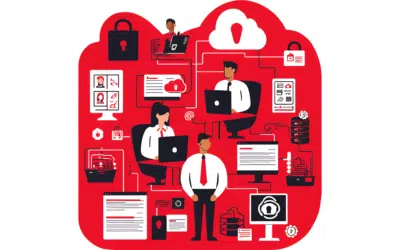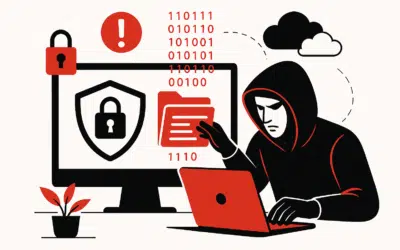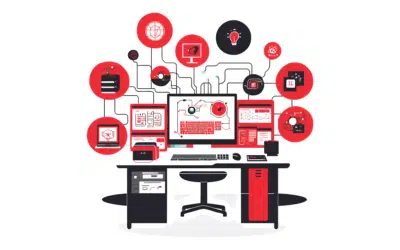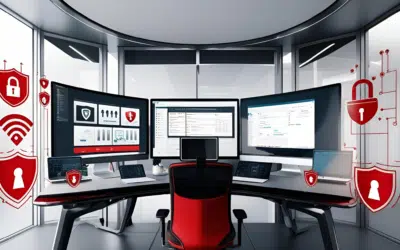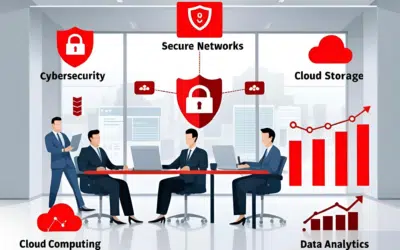Security in a co-managed IT environment looks a little different than in a traditional environment. Don’t be alarmed. When leveraging a partner to co-manage your IT environment, you will have better, more robust security in most cases than if you were to manage the network on your own.
Security in any technology environment most often means monitoring, patching, and responding to security incidents. These are the same requirements that a co-managed environment has. The difference is that a co-managing IT partner, like Axxys Technologies, can bring deep expertise and experience, greatly improving the security posture of your environment.
This post will explore common questions and concerns around security in a co-managed environment. Later, we will recommend some best practices for making sure security stays front and center for both you and your IT partner.
Common Security Concerns in a Co-managed IT Environment
Security in a co-managed IT environment is always a concern for organizations. After all, it can be difficult to know who is responsible for what when two or more entities are involved in the day-to-day operations of the environment. Common security concerns that can occur in such an environment include the following:
Vulnerability management
When working with a partner, organizations may find themselves overwhelmed with the amount of patching and updating that needs to happen in order to keep their systems secure. If either party is not diligently monitoring and patching vulnerabilities, it can create an overall weak security posture which can lead to data breaches or malicious activity.
Access management
Another common security concern revolves around access control and authorization. As both parties have access to different parts of the environment, maintaining tight control over who has access to what is crucial in order to avoid any misuse or unauthorized access which can lead to data loss or theft.
Compliance adherence
Organizations need to ensure that they remain compliant with applicable laws, regulations, and standards relevant to their industry sector. This includes adhering to specific security policies set by both parties as well as ensuring they are up-to-date on the required training or certifications necessary for meeting the demands of such policies.
Data privacy protection
Data privacy protection is always a major concern when it comes to technology environments, including those managed by multiple entities. Ensuring that sensitive information is properly secured and only accessible by those who need it should be a top priority for both parties involved in co-managing the environment so as not to breach any applicable laws or regulations regarding data protection and privacy rights.
Resource allocation
Allocating resources between departments and users within an organization is also important for maintaining overall security within a co-managed IT environment. It’s important for both sides of the partnership to make sure resources are allocated effectively and efficiently so that no one user or department has too much control over certain areas of the system which could potentially lead to mismanagement or misuse of critical information assets which could lead to disaster if not properly maintained and monitored by both parties involved in managing the system.
Security Best Practices for Co-Managed Environments
These security concerns must be taken into consideration when utilizing a partner for co-managing an IT environment. There will likely be two different sets of stakeholders involved in making decisions about how best secure the environment from potential threats inside and outside of its walls.
Organizations looking to address the common security concerns associated with co-managed IT environments should begin by developing and implementing risk mitigation strategies at both the organizational and technical levels. At the organizational level, companies should focus on ensuring that their internal policies and procedures are effective in mitigating security risks.
This includes setting clear expectations around roles and responsibilities, as well as establishing appropriate access control protocols in order to ensure that only authorized personnel are accessing sensitive information or systems. Additionally, organizations should enforce strong compliance requirements for all users of their environment, including mandated training or certifications where applicable.
At a technical level, organizations should establish a comprehensive vulnerability management program in order to stay informed of potential threats and keep their systems up-to-date with the latest security patches. This must include regular scans of all components within the environment to identify any existing or emerging vulnerabilities before they can be exploited by an attacker. Additionally, companies should implement proper access control measures such as multi-factor authentication or role-based access controls (RBAC) to limit user access based on their assigned roles within the system.
Finally, data privacy protection is essential in any co-managed environment and organizations should deploy measures such as encryption technology or access logging/auditing tools to ensure that only authorized personnel have access to sensitive information. Furthermore, organizations should create resource allocation policies that outline how resources will be divided between departments/users so as not to create any single points of failure within the system which could cause major disruptions if not properly managed.
Overall, it’s important for organizations utilizing a partner for co-managing their IT environments to take the necessary steps to protect their data and systems from potential threats both internally and externally. Implement best practices such as vulnerability management, access control protocols, compliance adherence, data privacy protections, and resource allocation policies. Doing so will help the organization successfully mitigate security risks while enhancing their overall security posture going forward into the future.
Mitigate Technology Risk with a Co-managed IT Partner
Co-managed IT can be a valuable tool for businesses looking to streamline their operations and mitigate technology risk. By partnering with a co-managed IT provider, businesses can benefit from their expertise and tools to proactively address potential risks. Additionally, they can handle threat detection so that businesses don’t have to worry about it themselves. With careful planning and implementation of security protocols, co-managed IT can be a great asset for any business.
Axxys Technologies has the experience you need when it comes to security. With a comprehensive understanding of digital operations in this space, we’re able to provide unmatched support. Contact us today to get started.

